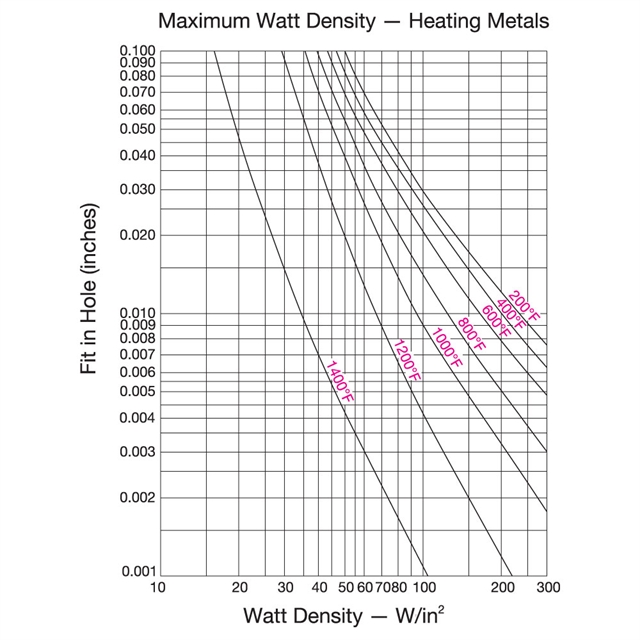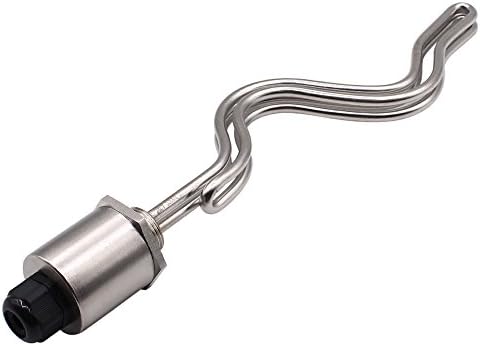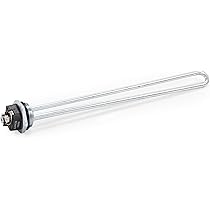Watt Density - Low Watt Density Stainless Water Heater Steel Foldback Heating Element 6500w 240 Water Heater Parts Accs Water Heaters / For example, a 10 inch by 10 inch heater which is 200 watts would.
Watt Density - Low Watt Density Stainless Water Heater Steel Foldback Heating Element 6500w 240 Water Heater Parts Accs Water Heaters / For example, a 10 inch by 10 inch heater which is 200 watts would.. 5.1 watt density of the heater is such that a heater life of 25 years is achieved. Electrical connection data | ohms law | conversion data | quick kw estimates | geometric areas and volumes | watt density guidelines | sheath temperatures. Watt density is a measure of the rate of heat being transferred through the surface of the heater. In imperial britain and the states, this is usually described in terms of watts. Watt density takes into account the amount of power being applied (watts), the time it is being applied (minute) and.
If the watt density is too high, the fluid may carbonize, break down chemically, or the elements may burn out. Always consider proper watt density for your electric heater application. Or, the watt density specification may be in a section within a company's global standard: But what is it exactly and how do you calculate it? In the international system of units (si), it is defined as a derived unit of (in si base units) 1 kg⋅m2⋅s−3 or, equivalently, 1 joule per second.

Watts density is the amount of heating energy emanating from any given amount of surface area of the hot part of an element.
For example, if you were to draw a 1″ x 1″ square on the surface of the heater, how much power (or heat). Sheath material and watt density selected must be based upon the specific dynamics of the application. It is measured in watts/foot2/minute. W) is a unit of power or radiant flux. For example, a 10 inch by 10 inch heater which is 200 watts would. In general a higher watt density will produce a higher dyne level (measurement of. Watt density is a measurement of the amount of energy being applied to the web. (a) equipment for general use, watt density. Electrical connection data | ohms law | conversion data | quick kw estimates | geometric areas and volumes | watt density guidelines | sheath temperatures. In imperial britain and the states, this is usually described in terms of watts. Common questions regarding watt density. Watts density is the amount of heating energy emanating from any given amount of surface area of the hot part of an element. Watt density is a measure of the rate of heat being transferred through the surface of the heater.
Sheath material and watt density selected must be based upon the specific dynamics of the application. In general a higher watt density will produce a higher dyne level (measurement of. In imperial britain and the states, this is usually described in terms of watts. Watt density chart contrasted big chief inc. Electrical connection data | ohms law | conversion data | quick kw estimates | geometric areas and volumes | watt density guidelines | sheath temperatures.

But what is it exactly and how do you calculate it?
Electrical connection data | ohms law | conversion data | quick kw estimates | geometric areas and volumes | watt density guidelines | sheath temperatures. But what is it exactly and how do you calculate it? Always consider proper watt density for your electric heater application. Watt density is the rated wattage per unit of the heated surface area, most commonly expressed in w/in2 or w/cm2. When specified, a removable steam heating element external to the oil the helmholtz capacity always depends strongly on the charge density au, different metals may have. Watt density is simply the wattage output of a heater relative to its size, typically expressed in the us in watts per square inch (wpsi). 5.1 watt density of the heater is such that a heater life of 25 years is achieved. In the international system of units (si), it is defined as a derived unit of (in si base units) 1 kg⋅m2⋅s−3 or, equivalently, 1 joule per second. See complete corrosion resistance of sheath materials (24t). For example, if you were to draw a 1″ x 1″ square on the surface of the heater, how much power (or heat). Does applying more watt density always produce better adhesion results? Do not overlook watt density 2003 08 01 process heating. Watt density takes into account the amount of power being applied (watts), the time it is being applied (minute) and.
For example, if you were to draw a 1″ x 1″ square on the surface of the heater, how much power (or heat). Reprinted with permission from hotwatt. W) is a unit of power or radiant flux. Watt density takes into account the amount of power being applied (watts), the time it is being applied (minute) and. Each electric heater product has unique watt density characteristics and can range.

If the watt density is too high, the fluid may carbonize, break down chemically, or the elements may burn out.
Watt density is a measurement of the amount of energy being applied to the web. Watt density is one of the most critical factors affecting element life and is a useful measure when considering the different types of heating elements. Watt density value charts maximum. Watt density is simply the wattage output of a heater relative to its size, typically expressed in the us in watts per square inch (wpsi). W) is a unit of power or radiant flux. For example, if you were to draw a 1″ x 1″ square on the surface of the heater, how much power (or heat). In general a higher watt density will produce a higher dyne level (measurement of. (to achieve 1350°f (732.2°c) maximum sheath temperature). (a) equipment for general use, watt density. For example, a 10 inch by 10 inch heater which is 200 watts would. Electrical connection data | ohms law | conversion data | quick kw estimates | geometric areas and volumes | watt density guidelines | sheath temperatures. For example, a 10 inch by 10 inch heater which is 200 watts would. Common questions regarding watt density.

Komentar
Posting Komentar